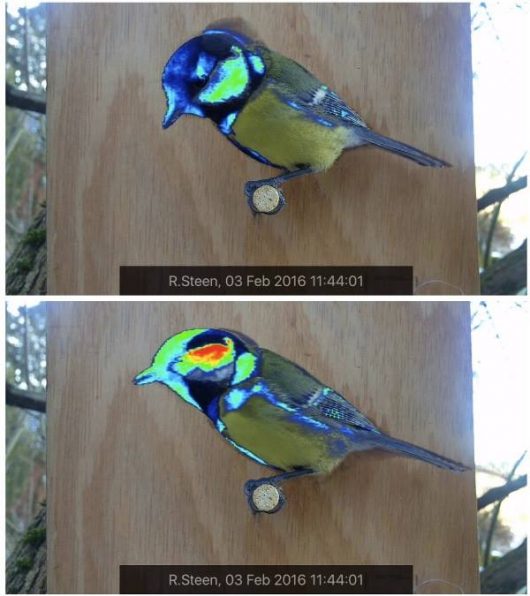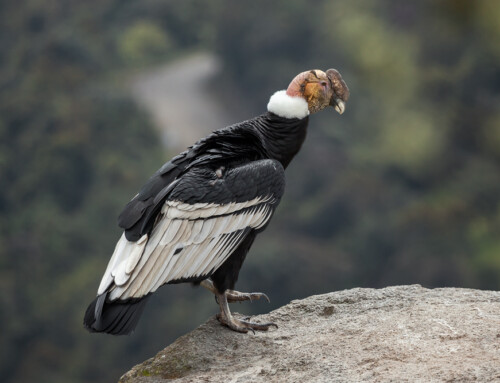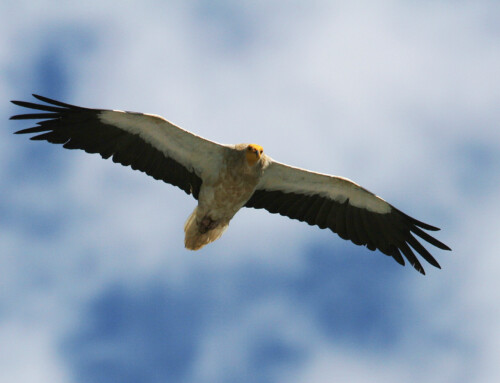The use of a smartphone app for motion detection to monitor birds remotely
LINKED PAPER
Bird monitoring using the smartphone (iOS) application Videography for motion detection. Steen, R. 2017. Bird Study. DOI: 10.1080/00063657.2016.1271772. VIEW
Video monitoring is an important tool for animal behavioral ecologists. Most video monitoring equipment has advanced systems for recording events by using automated functions such as those for detecting moving objects (Steen 2009, 2017b). The technology is evolving rapidly. Smartphones along with application software (apps) can be used as advanced scientific equipment (Teacher et al. 2013).

In the present study, I tested a smartphone (iOS) app for remote monitoring of birds, including data transfer over the mobile network (Steen 2017a). The model system consisted of a customized bird feeder at an established feeding site where high visitor frequency provided a rigorous test of procedures (Fig. 1). I installed the off-the-shelf app Videography, which runs advanced algorithms on the camera input to detect motion and trigger automated video recordings (Fig. 2). The footage was stored immediately in a cloud service or locally on the smartphone (Video 1).
Video 1 Event recording by the use of ‘Videography’ app (iOS) with motion detection – model system a bird feeder from R. Steen on Vimeo
During an initial test phase, when the output from the smartphone was compared with that from 60 min of simultaneous filming with a camcorder, the latter recorded 306 bird visits. The smartphone with the Videography app missed only three of these (~1.0% failure). Compared to digital video monitoring equipment designed for surveillance (e.g. Steen 2009) and wildlife camera traps, a smartphone with its applications is more prone running time errors. Although, there were relatively few of these (only four in 28,700 events over 172 h of monitoring), they did result in the loss of 4 hours of data collection.

The metadata (i.e. file name, date and time) of the video files with bird visits were extracted and catalogued automatically, thereby speeding up data analysis and removing the need for manual data entry prior to analysis. Bird visits were distributed throughout the day, increasing rapidly after sunrise and ceasing before dusk; a similar activity pattern to that reported for other passerines.
The smartphone with the Videography app is easy to use and offers a novel and efficient means of automatically monitoring birds visiting a central place. It would be suitable for close-up monitoring of birds that regularly visit the entrances of cavities, nests or feeding places. Beyond motion detection, the system described in the present paper allowed rapid data transfer to the cloud, automated extraction of the date and time of each visit, together with the ease of data processing, making it a flexible, easy-to-operate and time-efficient means of obtaining ecological data.
References and further reading
Steen, R. 2017a. Bird monitoring using the smartphone (iOS) application Videography for motion detection. Bird Study 64(1): 62-69. VIEW
Steen R. 2017b. Diel activity, frequency and visit duration of pollinators in focal plants: in situ automatic camera monitoring and data processing. Methods in Ecology and Evolution 8(2): 203-13. VIEW
Steen R. 2009. A portable digital video surveillance system to monitor prey deliveries at raptor nests. Journal of Raptor Research 43(1): 69-74. VIEW
Teacher, A.G.F., Griffiths, D.J., Hodgson, D.J. & Inger, R. 2013. Smartphones in ecology and evolution: a guide for the app-rehensive. Ecology and Evolution 3: 5268-5278. VIEW
Videography By Appologics UG. VIEW
Image credit
Featured image: Still of a Great Tit Parus major from video footage recorded using the Videography app © Ronny Steen
Blog posts express the views of the individual author(s) and not those of the BOU.
If you want to write about your research in #theBOUblog, then please see here.





